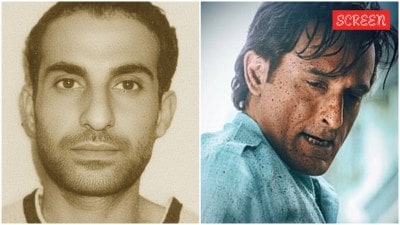He linked 2-nation theory with BJP stand on Babri
When Murli Manohar Joshi says that the BJP should not ‘‘dilute its core ideology’’ while writing a resolution asking L K...

When Murli Manohar Joshi says that the BJP should not ‘‘dilute its core ideology’’ while writing a resolution asking L K Advani to return, he may have his reasons. For, the Jinnah debate isn’t just about Jinnah, it’s also about Ayodhya and Babri Masjid—in Advani’s own words.
On April 11, 2001, deposing before the Liberhan Commission on the demolition of the Babri Masjid, Advani held Jinnah’s two-nation theory responsible for the creation of a ‘‘theocratic’’ Pakistan. And lauded the Indian Constituent Assembly for rejecting theocracy—and, therefore, rejecting the two-nation theory.
Advani also linked the Ayodhya movement to the two-nation theory claiming that was the logic behind those ‘‘campaigning for Babri Masjid’’ because they ‘‘want the country to choose between Babar and Rama.’’
Following is the key exchange:
• Anupam Gupta: While giving the Commission your perspective of the Somnath Temple, you had in passing referred to this article yesterday, ‘‘A tale of two temples,’’ published in The Indian Express on July 30, 1989. Without doubt, it is a major conceptual exposition by you. I draw your attention to the last paragraph of this article:
‘‘If the controversy in Ayodhya was simply one between a temple and mosque, it would not have been that intractable. Those campaigning for Babri Masjid should realise that they are wanting the country to choose not between a Masjid and a Mandir, they are pitting Babar against Rama. Jinnah’s two-India thesis resulted in Pakistan. It is time the thesis is finally buried, and it is accepted that there is but one India and that this India and its entire population, Hindu or Muslim, can identify itself only with Rama and not with Babar.’’
This choice, this sharp and irreconcilable choice, between Rama and Babar that you offered the Indian people was later to become a constant theme of your campaign regarding the Ayodhya movement… This theme of Rama and Babar and the choice that you offered—the actual text of this theme and the subtext of innuendo and implication—was it not clearly anti-Muslim?
• Advani: ‘‘You have quoted the last paragraph of this article. I may mention that this was prompted to me by the film on Gandhi that I saw. It was in that film that at one point of time, and that too has been referred to in the earlier paragraph (of the article) when the British Viceroy used to tell Jinnah that India should do this or that India should do that, Jinnah’s immediate reaction used to be: ‘‘Which India are you talking about? After all, there are two Indias, not one. One is Hindu India and the other is Muslim India.’’
‘‘This is a piece of dialogue that I listened to in that film. And that made me actually aware that India was partitioned not because our leadership at that time wanted it.
‘‘India was partitioned because the Muslim League on the basis of its two-nation theory insisted on Partition. The country’s leadership at that time comprised of Gandhiji, Nehruji, Sardar Patel, Rajaji, and yet the Muslim League’s chant was that if India remains undivided, Muslims would have to live under Hindu majority rule and we cannot live together, we are two separate nations. On that basis, of course, followed by various direct action threats, etc, they forced Partition upon the country.
‘‘After Partition, Pakistan, as an independent entity, declared itself a theocratic state. It was declared an Islamic State. India’s Constituent Assembly, on the other hand, true to the tradition and culture of this country, rejected theocracy and in its Constitution declared that all citizens in India, irrespective of their faith, would be equal. From the nature of the State we claim to call it as secular, though the word ‘secular’ did not occur in the Constitution as framed in 1950. It was also a rejection of the two-nation theory.’’
- 01
- 02
- 03
- 04
- 05































